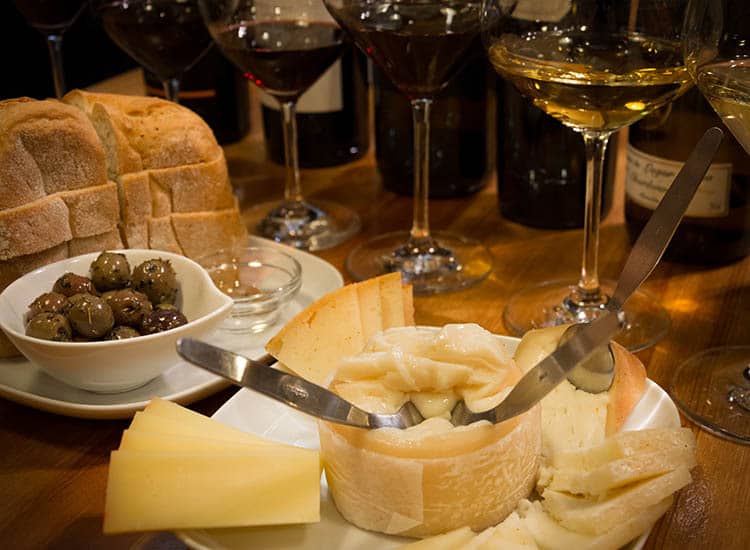
For the last decade, acidity in wine has been like hops in beer: The more of it there is, the more the wine is acclaimed and fetishized. But, as with beer, the tide has been turning lately—people are looking for more subtle drinks to pair with dinner. If you’re one of those folks, take a look at chasselas, Switzerland’s most planted grape.
“The best aren’t raging with acidity,” says Victoria James, a sommelier at Cote in NYC. “They have balance, and that’s the most important thing.” James became a convert during a trip to the Alps in 2014, touring the small country with a band of sommeliers all looking to find out more about Swiss wine. “They are so food friendly, with a bright acidity but also a nice richness,” she says.Until recently, however, it’s been hard to find good chasselas in the United States—or in Switzerland, for that matter.
“Unfortunately, because the grape is so widespread, there are some really terrible examples,” James says. Unless it’s grown in poor soil and a cool climate, where the grape can retain what little acidity it has, it makes flaccid, dull wines. In fact, in France—where the variety also grows—most vintners regard chasselas as a table grape. Head to the Alps, however, and the cold nights and rocky vineyards can turn out some terrific examples. The vine’s stronghold is the Vaud, on the slopes above Lake Geneva, where it originated. Here, almost three-quarters of the vineyards are planted with chasselas, though you’ll rarely see the grape’s name on a wine label. Instead, the wines take the name of the place they were grown.
The most esteemed examples come from Lavaux, declared a UNESCO World Heritage Site for its terraced hillsides, shaped by the monks who grew vines here in the 11th century. The steepest sites tend to be the most hallowed for growing, like Dézaley and Calamin, two areas considered Grand Crus. The lake’s influence is important, too, moderating the temperature and reflecting sunlight onto the vines.The mountains climb higher as you head east into the Valais, where the locals call chasselas “fendant.” Here, the vineyards follow the Rhône River up toward its origins in the highest peaks of the Alps; although the air is brisk, the mountains keep the clouds at bay, making the Valais Switzerland’s sunniest spot.
The combination results in some of the country’s most charming, refreshing wines, lighter and fruitier than those grown in the Vaud. Sometimes they are even bottled with a little residual carbon dioxide to provide a refreshing fizziness. Still, these aren’t “fruity” wines; “salty” is a more common descriptor, along with “stony” and “mineral.”
When it comes to what to eat with chasselas, skip fondue, James says. “I think the reason chasselas and fondue have become cliché is because both are cheap.” In her experience, chasselas deserves a serious cheese, like the local L’Etivaz AOP. “It’s made from the milk of cows that feed on all the spring grasses and herbs, so the cheese is incredibly aromatic,” she says. Chasselas works well with fragrant cheeses because it doesn’t compete in scent, and the creamy texture balances the concentrated flavors in the cheese. “The best pairing is hard cheese and aged chasselas,” she says, “or funky cheeses, which already have plenty of acidity.”





